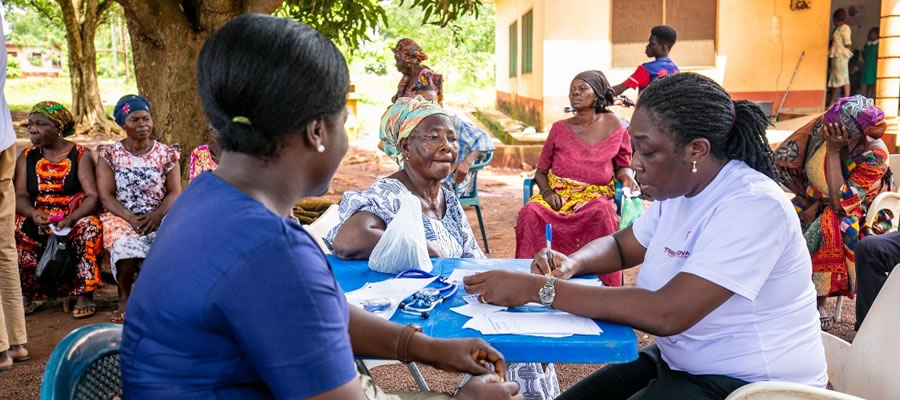

vulnerability
Introduction
The development of a nation depends on the important contributions of not only a segment of the population but on the collective contributions of every individual, including persons with disabilities (PWDs). It is imperative therefore, to get reliable data that would inform policies and programmes aimed at addressing the challenges confronting PWDs. In the 2010 PHC data were collected on PWDs. This chapter discusses PWDs, their education and economic activity status in the Akatsi North District.
Population with Disability
Table 6.1 presents data on the population with disability by type and sex in the district in 2010. The persons with disability are 4.1 percent of the total population. Among female population, 4.4 percent have disability compared with 3.7 percent among males.
Table 6.1 also shows PWDs by type. Sight disability is the commonest (45.6%), followed by physical disability (26.8%) and hearing disability (19.1%). The least common type is emotional disability (9.7%).
The proportion of females with sight disability (50.5%) is higher than that of males (38.8%). On the other hand, the proportion of males with physical disability (27.9%) is relatively higher than their female counterparts (26.0%).
Disability and Economic Activity
Table 6.2 presents data on persons 15 years and older with disability by economic activity status and sex in the district. Three-quarters (75.3%) of persons without disability and 56.6 percent of persons with disability are employed. Less than one-quarter (23.4%) of persons without disability and 43.0 percent of persons with disability are economically not active.
Persons with hearing (63.4%) and speech (61.6%) disabilities are more likely than others to be employed.
Date Created : 11/17/2017 5:41:19 AM













 facebook
facebook
 twitter
twitter
 Youtube
Youtube
 +233 593 831 280
+233 593 831 280 0800 430 430
0800 430 430 GPS: GE-231-4383
GPS: GE-231-4383 info@ghanadistricts.com
info@ghanadistricts.com Box GP1044, Accra, Ghana
Box GP1044, Accra, Ghana